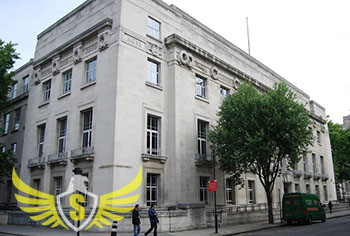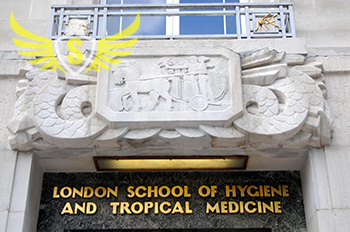
As anyone is going to tell you, London is among other things a great place to pursue your interest in higher education. The capital has more colleges and universities than any other place on the planet, and if you want to study anything – from drama to economics to humanities or medicine, you will definitely be able to find a suitable place for this here. A large portion of the business that moving companies in London have today is actually in the field of student removals too.
When it comes to medicine, and more precisely, tropical medicine, the London School of Hygiene and Tropical Medicine is regarded as being one of the most prestigious institutions in the country and in Europe as a whole for developing in this field. It is a research university, which means that in addition to just studying opportunities, here you will have the chance to actually take part in the advancement of science. Let’s get around some facts and figures about the London School of Hygiene and Tropical Medicine.
The history
 The original founder of the London School of Hygiene and Tropical Medicine was sir Patrick Manson. This happened in 1899 and the original location of the then London School of Tropical Medicine was at the Albert Dock, where the Seamen’s Hospital was located. The school was not the first of its kind – a year earlier a similar institute was founded in Edinburgh and several years before that – since 1893 – the field was taught and studied at the Livingstone College in London, but it is safe to assume that the London School of Hygiene and Tropical Medicine was among the forerunners in the field and the most ambitious project of its kind at the present moment. Sir Patrick Manson actually taught tropical medicine at the Livingstone College and he was a firm believer in the importance of separating his field from the rest of the medical profession. It is logical for this to happen in England, because at that time the Colonial Empire, a large portion of which was located in tropical regions on the planet, was still very much alive and well, though certain signs of decline were already visible.
The original founder of the London School of Hygiene and Tropical Medicine was sir Patrick Manson. This happened in 1899 and the original location of the then London School of Tropical Medicine was at the Albert Dock, where the Seamen’s Hospital was located. The school was not the first of its kind – a year earlier a similar institute was founded in Edinburgh and several years before that – since 1893 – the field was taught and studied at the Livingstone College in London, but it is safe to assume that the London School of Hygiene and Tropical Medicine was among the forerunners in the field and the most ambitious project of its kind at the present moment. Sir Patrick Manson actually taught tropical medicine at the Livingstone College and he was a firm believer in the importance of separating his field from the rest of the medical profession. It is logical for this to happen in England, because at that time the Colonial Empire, a large portion of which was located in tropical regions on the planet, was still very much alive and well, though certain signs of decline were already visible.
The first change of location for the London School of Hygiene and Tropical Medicine took place in 1920. That was the time when the school moved to central London, in a former hotel in Endsleigh Gardens, which in the years of the First World War was used as a hospital for officers. The last move, to the present location in Gower Street, took place in 1929. Today the London School of Hygiene and Tropical Medicine is part of a larger network which is governed by the London University. It is actually considered to be the major resource for postgraduate teaching and research in public health and tropical medicine in the country, and those who successfully complete their study and research there receive a degree from the London University.
A place of research
Even by simply looking at the figures it becomes more than clear that the London School of Hygiene and Tropical Medicine is the true epitome of the term “research university”. For example, let’s have a look at the academic 2009/2010 year. The total income of the London School of Hygiene and Tropical Medicine for that time was declared to be 101.7 million GBP. Of those, 62.5 million GBP came directly from research contracts and grants for studies that have been conducted within the walls of the institution. It is a very impressive achievement indeed and one that can teach similar institutes a valuable lesson. It also speaks volumes about the prestige the London School of Hygiene and Tropical Medicine has in the field of tropical medicine, as well as the quality of the research that is being conducted by its students and teachers.
The building
The Gower Street Building was specifically designed for the purpose of housing the London School of Hygiene and Tropical Medicine. That is why the architects – five of them – who were employed to make the design of the School’s new home were all experienced in building laboratories and research facilities. As we have already had the chance to mention, since 1929 the School has been at its current location, which speaks volumes about the quality of the work that has been done on the building and the fact that it is still adequate for its purposes after all the advances that have been made in the field of clinical and laboratory research in the past century or so. A curious fact is that the majority of the funds that were used for the construction of the new building – 2 million USD – were provided by the Rockefeller Foundation.
Faculties and research centres
There are several centres for reach and faculties that make up the academic body of the London School of Hygiene and Tropical Medicine.
The Faculty of Epidemology and Population Health specialized in:
- Clinical trials
- Analysis of routinely collected statistics
- Indirect techniques for measuring mortality in developing countries
- Conduct and analysis of observational studies
- Large-scale field trials
- Design and evaluation of interventions
- National and global health
 There is also the faculty of Infectious and Tropical Diseases, which does research in:
There is also the faculty of Infectious and Tropical Diseases, which does research in:
- HIV/AIDS and other sexually transmitted diseases
- malaria and other vector borne diseases
- tuberculosis
- vaccine development and evaluation
- vector biology and disease control
The Faculty of Public Health and Policy does research aimed at improving the overall global public health. It is becoming more and more relevant and sought after by potential students in recent decades.
There a couple of dozen research centres on top of the individual faculties. Their complete list reads as follows:
- Centre for the Evaluation of Public Health Interventions
- Centre on Global Change and Health
- European Centre on Health of Societies in Transition (ECOHOST)
- Gender Violence & Health Centre
- Malaria Centre
- MARCH Centre for Maternal, Reproductive & Child Health
- Clinical Trials Unit
- Centre for Global Mental Health
- Bloomsbury Centre for Genetic Epidemiology and Statistics
- Centre for Disability and Development
- Centre for Statistical Methodology
- Centre for History in Public Health, London School of Hygiene and Tropical Medicine
- Hygiene Centre
- Centre for the Mathematical Modelling of Infectious Diseases
- Centre for Research on Drugs and Health Behaviour
- International Centre for Eye Health
- Wellcome Bloomsbury Centre

